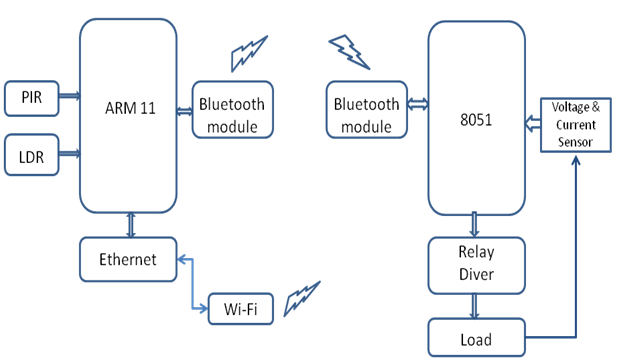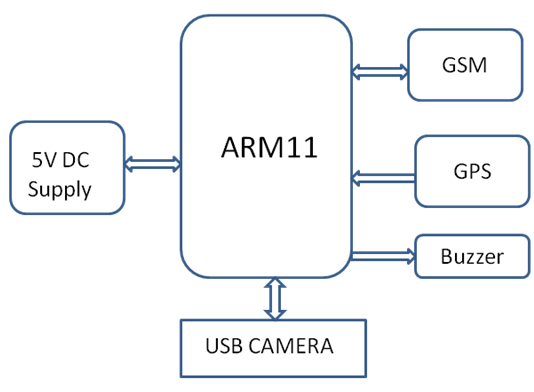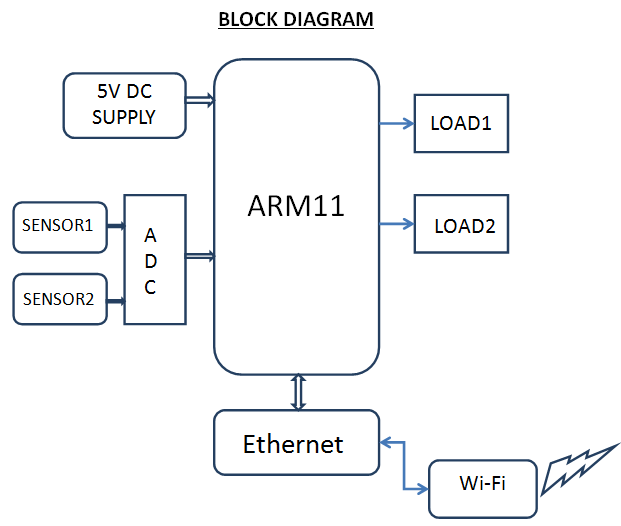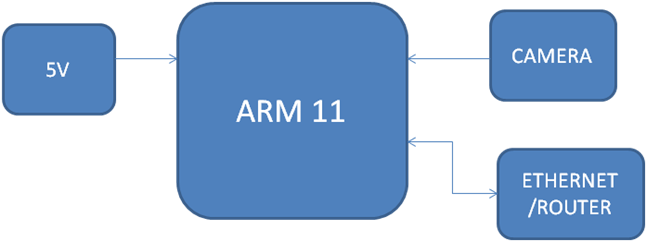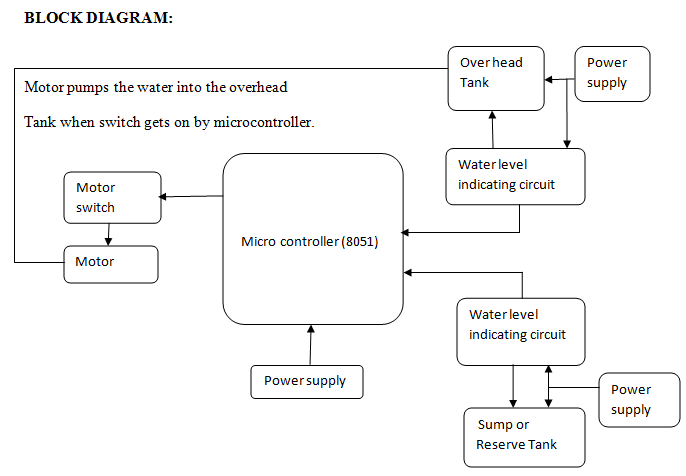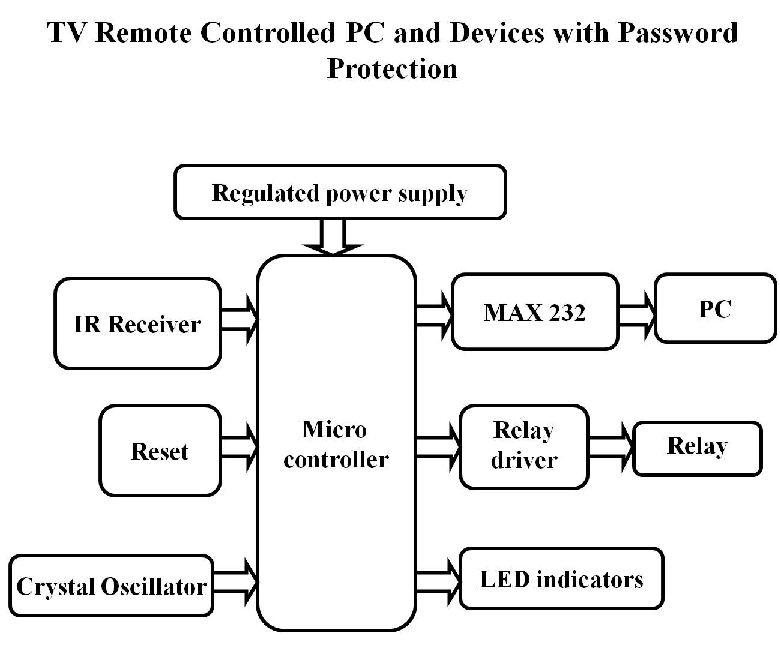Existing Work:
In the existing Wireless Sensor Based Energy Conservation work, the communication protocol was limited to Bluetooth only which is very short distance and should require a device interface in order to view or control the data which is the drawback of the developed system.
Proposed Work:
The proposed Wireless Sensor Based Energy Conservation via Bluetooth work will include the low power high accuracy controllers through the Bluetooth communication as well we also control and view the data over the Intranet Network.
Load contains a Bulb, the current and Voltage consumed by the load will be monitored and an automated operation of the load based on PIR and LDR values will be done from remote location.
BLOCK DIAGRAM
Hardware:
ARM11, PIR Sensor, LDR Sensor, Bluetooth module, Wi-Fi Router, 89s52, Current Sensor, Voltage Sensor, Relay Driver, Load.
Software:
OS: Embedded Linux, Language: C/ C++, IDE: Qt Creator.
Applications:
Home automation, Industrial Power Control
Advantages:
Load Control, Remote location access,

